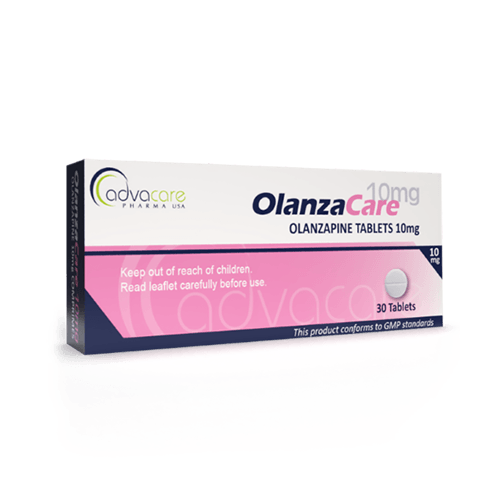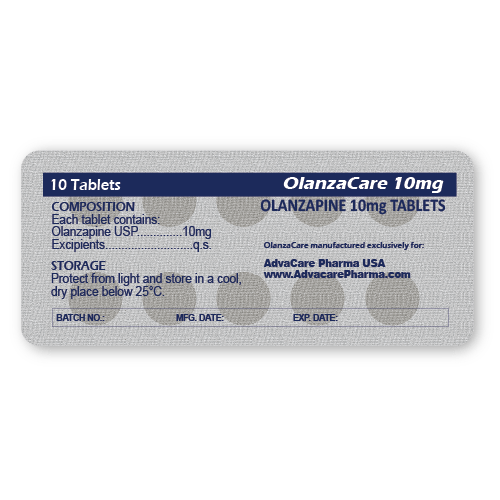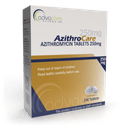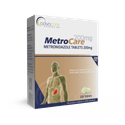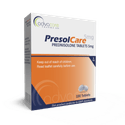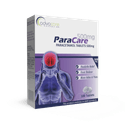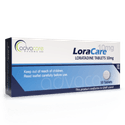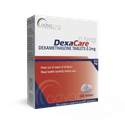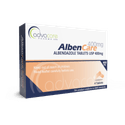- Home›
- Pharmaceuticals›
- Pharmaceutical Tablets›
- Olanzapine Tablets
Olanzapine Tablets
Dosage
Packaging
What is Olanzapine?
Active Ingredients: Olanzapine
Olanzapine Tablets are a drug used to treat symptoms associated with schizophrenia and certain types of bipolar disorder. This medication may also be used to treat some forms of depression that cannot be managed with other drugs. It may be used alone or in combination with other medications.
Olanzapine is also prescribed for its antiemetic properties as part of a multi-drug regimen during chemotherapy.
Olanzapine belongs to the class of medications called atypical antipsychotics. Though the exact mechanism of action is unclear, it works by regulating the amount of dopamine, serotonin, and other neurotransmitters in the brain. This activity helps to stabilize mood and reduce agitation.
AdvaCare Pharma is a global supplier of Olanzapine Tablets. AdvaCare excels at the production of high-quality yet cost-effective treatments. This medication is manufactured in our GMP-certified facilities located in China, India, and the USA.
Why are we a top Olanzapine manufacturer?
AdvaCare Pharma is a trusted Olanzapine manufacturer committed to providing quality-assured, cost-effective pharmaceuticals for an ever-changing global market. Manufacturing a wide range of 200+ pharmaceutical products in tablet form, we ensure that all of our oral solid dosage forms adhere to stringent GMP standards.
We operate according to a unique "vested supplier-distributor relationship" business model, in which we tie our success in a market to that of our distributor. Such a model facilitates a closer relationship by working together to achieve pre-defined goals for market entry and expansion. As a Olanzapine manufacturer and global supplier, we implement unique strategies to ensure successful distribution.
Uses
What is Olanzapine used for?
It is used to treat symptoms associated with schizophrenia and bipolar disorder (type 1). It is also used for treatment-resistant depression. It is typically used with other medications, such as fluoxetine or lithium.
Olanzapine is also prescribed to control nausea or vomiting associated with chemotherapy.
How are Olanzapine Tablets used?
This medication is intended to be taken orally. Olanzapine Tablets should be taken with a glass of water, at about the same time every day. A patient's fasting glucose and lipid panel at baseline should be recorded before starting treatment.
Can Olanzapine be abruptly stopped?
Suddenly stopping the usage of this drug may cause withdrawal symptoms or the recurrence of symptoms. It is best to slowly taper off the use of this medication.
What dose should be taken?
Recommended dosage of Olanzapine may vary based on different medical conditions and age.
Adult Dosing Recommended dosage may vary based on different medical conditions:
- For schizophrenia, the usual starting dose for adults is 5-10mg, taken once per day. The dosage can be increased by 5mg per day, on a weekly basis, as needed. For non-smoker, elderly, debilitated, or female patients, or if hypotension-risk is present, the starting dose should be 2.5-5mg, taken once per day. Doses less than 10mg per day are rarely more effective. The need for treatment should be periodically assessed to evaluate whether the patient still needs a particular treatment. Discontinue use if ANC (neutrophils) fall below 1000 or if there is an unexplained decrease in WBC.
- For manic or mixed bipolar I disorder, as a monotherapy, the usual dose is 5-20mg, taken once per day. The initial starting dose is 10-15mg, taken once per day. The dosage may be adjusted by 5mg per day, as needed. As valproate- or lithium adjunct, the usual dose is 5-20mg, taken once per day. The initial starting dose is 10mg, taken once per day. The dosage may be adjusted by 5mg per day, as needed. The maximum dosage is 20mg per day. For non-smokers, elderly, debilitated, or female patients, or if hypotension-risk is present, the starting dose should be 5mg, taken once per day. The need for treatment should be periodically assessed to evaluate whether the patient still needs a particular treatment. Discontinue use if ANC (neutrophils) fall below 1000 or if there is an unexplained decrease in WBC.
- For acute depressive bipolar I disorder, the usual dose is 5-12.4mg, taken in the evening. The starting dose is 5mg, and the maximum dosage is 20mg per day. The starting dose can be reduced to 2.5mg taken in non-smoker, elderly, debilitated, or female patients or if hypotension-risk is present. Olanzapine is typically combined with fluoxetine.
- For acute, treatment-resistant major depressive disorder, the usual dose is 5-20mg, taken once in the evening. The starting dose is 5mg, and the maximum dosage is 20mg per day. The starting dose can be reduced to 2.5mg taken in non-smoker, elderly, debilitated, or female patients or if hypotension-risk is present. Olanzapine is typically combined with fluoxetine.
- For chemo-related nausea and vomiting prevention (moderately-emetogenic and highly-emetogenic parenteral chemo), the usual dose is 5-10mg, taken once on day 1, and then 5-10mg taken once per day on days 2-4. Olanzapine should be used as part of a multi-drug regimen. A lower dose may be necessary in elderly or debilitated patients, or if the drug is poorly tolerated.
- For chemo-related refractory nausea or vomiting, the usual dose is 5-10mg, taken once per day. Use for breakthrough emesis if olanzapine was not used as part of part of the prophylactic regimen on days 1-4.
Pediatric Dosing For schizophrenia, the usual dose for children aged 13-17 years is 10mg, taken once per day. The starting dose is 2.5-5mg, taken once per day. The maximum dosage is 20mg per day. Olanzapine is not a first-line treatment due to weight gain and hyperlipidemia. The dose can be adjusted in 2.5-5mg increments. Treatment should be periodically assessed. Discontinue use if ANC (neutrophils) fall below 1000 or if there is an unexplained decrease in WBC.
For acute manic/mixed bipolar I disorder, the usual dose for children aged 13-17 years is 10mg, taken once per day. The starting dose is 2.5-5mg, taken once per day. The maximum dosage is 20mg per day. Olanzapine is not a first-line treatment due to weight gain and hyperlipidemia. The dose can be adjusted in 2.5-5mg increments. Treatment should be periodically assessed. Discontinue use if ANC (neutrophils) fall below 1000 or if there is an unexplained decrease in WBC.
Refer to a doctor or pharmacist for guidelines on dosage. Do not exceed what they advise.
Who can use Olanzapine?
Olanzapine can be administered to adults and children over 13 years old, but caution is advised for those who are:
Pregnant Providers should carefully assess both the potential risks and benefits when prescribing olanzapine to pregnant women, particularly those in the 3rd trimester. Glucose may need to be monitored during pregnancy, as there has been a recorded risk of gestational diabetes based on the drug's mechanism of action. There is also a possible risk of neonatal extrapyramidal and withdrawal symptoms, based on antipsychotic use. According to human data, there is no risk of teratogenicity.
Breastfeeding Providers should carefully assess both the potential risks and benefits when prescribing olanzapine to breastfeeding women. There is no known risk of harm, but there is also no recorded data available on the effects on milk production.
Other warnings
During treatment, it is important to monitor weight and blood sugar regularly, as olanzapine is known to cause weight-gain, metabolic changes, and increased levels of glucose and lipids.
This drug may affect liver function, so monitoring of liver enzymes may be necessary during treatment.
Olanzapine is known to lower the seizure threshold, so a modified dosage may be necessary.
Side Effects
As with all pharmaceuticals, some unwanted effects can occur from the use of Olanzapine Tablets.
Common side effects include, but may not be limited to:
- drowsiness
- orthostatic hypotension
- tremor
- restlessness
- weight gain
- abdominal pain
Serious side effects may include:
- weakness
- confusion
- hyperglycemia
- high cholesterol
- neuroleptic malignant syndrome
- falls
Seek medical assistance in the event of a serious drug reaction affecting many parts of the body. Symptoms may include rash, fever, swollen glands, flu-like symptoms, muscle aches, severe weakness, unusual bruising, or jaundice.
For a comprehensive understanding of all potential side effects, consult a medical professional.
If any symptoms persist or worsen, or you notice any other symptoms, please call your doctor immediately.
Precautions
Do NOT use Olanzapine Tablets if:
- You are allergic to any of the ingredients.
- You are pregnant or breastfeeding.
Olanzapine may not be suitable for people with certain conditions, so it is important to consult with a doctor if:
- You have diabetes, epilepsy, or glaucoma.
- You have problems with the heart, liver, kidney problems, or respiratory system.
- You have bowel problems or high cholesterol.
Due to possible drug interactions, consult with your doctor about any medications or supplements you are taking before your treatment with olanzapine. Some known interactions occur with drugs that are sedating or slow breathing, such as opioids, sleeping pills, muscle relaxers, or anti-anxiety or anticonvulsant medications. This is not a complete list. Olanzapine is contraindicated with potassium chloride and potassium citrate.
Antipsychotic drugs, including olanzapine, have been associated with an increased risk of elevated blood sugar and cholesterol levels. It is advised to measure baseline levels and then to regularly monitor these parameters while undergoing treatment with this medication. This is particularly important for individuals with a high risk of developing diabetes. It is important to note that hyperglycemia is not typically dose-dependant and reversible on discontinuing therapy.
Treatment with olanzapine may cause side effects such as orthostatic hypotension, dizziness, or severe drowsiness. These symptoms could increase the risk of falls, fractures, and other types of injuries.
Alcohol should be avoided, as it may increase the risk of orthostatic hypotension caused by taking olanzapine.
References
A commentary on the efficacy of olanzapine for the treatment of schizophrenia: the past, present, and future
Olanzapine has been widely used for the treatment of schizophrenia. Many clinicians prescribe olanzapine due to its perceived superior antipsychotic efficacy compared to other first-line atypical antipsychotics.
This study aims to reevaluate the role of oral olanzapine in managing schizophrenia across various patient populations, including those with newly diagnosed schizophrenia, acute exacerbations, long-term maintenance therapy, and those with suboptimal treatment responses or treatment resistance.
Results from published literature consistently support olanzapine's efficacy relative to other antipsychotics, with lower rates of treatment discontinuation and significant improvements in schizophrenia symptoms.

You might be interested in...
Why AdvaCare Pharma?
As an industry leader, we are aware of our responsibility to provide affordable and sustainable solutions to improve healthcare worldwide.
